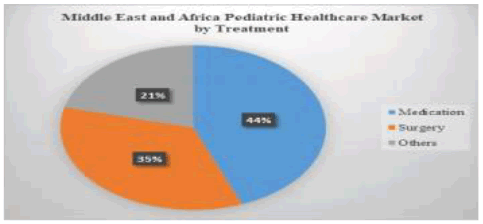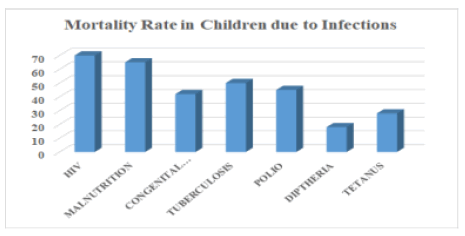Pediatric Healthcare: New Insights into Prevention, Diagnosis and Treatment for Newborns
Received: 20-Dec-2019 / Accepted Date: 25-Dec-2019 / Published Date: 27-Dec-2019
2nd International Conference on Pediatrics, Neonatology and Healthcare to be held at Amsterdam, Netherlands on April 16-17, 2020 working under the theme: “Current Evolution and Advancements in Enhancing Pediatric Care”.
Global Pediatric Market Report:
WHO has estimated that, in 2015, around 15 million of neonates are born every year and approximately one million die due to preterm birth complications. In addition, there is currently a significant increase in the survival of these critically ill patients, and There is a significant global surge in the number of fetal and neonatal care equipment over the years in order to reduce these complications of prematurely born babies. The focus is on reducing the risk of sepsis, and complications in general, with the purpose of reducing the length of hospital stay, and therefore reducing costs, but most importantly, with the neuronal protection that allows good neurological development in the future of these babies. The most important factors for the birth of premature babies include delayed maternity, induced fertility, lack of proper parental care etc; in future the care equipment should see a growth with the help of rapid technological advancements in collaboration with government support.
The Pediatrics market can be calculated in coordination with the infant mortality rate, death rate and the rate of diseases attacked along with the vaccine production and consumption for the child cure. From the total European population, 13% of the pediatrics suffers from clinical diseases.
At present, Netherlands population is 17,084,459 which shares 0.22% from the world population and among them the fertility rate is 1.74. The estimated growth rate till 2020 is 0.76%. Amsterdam holds with a population of more than 7 million. In 2017, Amsterdam the estimated population is nearly 815,925. The research showed that 8000 babies are born in the southern province of Netherlands annually, around 300 have some sort of defect - particularly heart, kidney and bladder issues and problems with sex organs are more common in Limburg or 3.84% of live births. However, the average rate of birth defects in the Netherlands is 2.84%. Fetal and neonatal care equipment is well designed to determine the disorders in the infants. It is anticipated that the global care equipment market will rise to 12.7 billion USD within 2025. This result in increasing birth rates coupled with prematurely born babies.
Middle East and Africa pediatric healthcare services advertise is developing consistently. Pediatric medical care refers to the health of the children, infants and adolescents. Pediatrics not just manages the physical and psychological wellness yet additionally social wellbeing of children. As per UNICEF, while the childhood death rate has been dropping in the Middle East since 2000, 415,000 kids in the locale keep on dying each year prior to their fifth birthdate. Middle East and Africa contain around 2% of worldwide social insurance use which anticipated that would develop consistently. Mechanical progression and government activities to enhance pediatric healthcare services area are driving the development for pediatric social insurance in Middle East and Africa. Market for pediatric medical care in Middle East and Africa was about US $48 billion of every 2016 and anticipated that would achieve US $63.6 billion by 2023 at CAGR of 4.1%. Therefore, the research on pediatrics is got critical importance to stop the future deaths of new-born, infant and adolescents. Innovations in medical technologies and government initiatives regarding child health care are expected to offer huge opportunities for market expansion.

Mostly children are prone to infectious diseases. This survey aims to give a descriptive summary of infants, children suffering from infectious diseases worldwide. These diseases are in terms infectious and deadliest among children and infants if left untreated. Though vaccinations, treatments are available for these types of diseases, if not treated earlier causes death. Most of the infectious diseases are contagious. As children have less immunity to fight against the foreign bodies they are easily affected by these diseases.

It is our obligation as health professionals to resume and convince the world population about the importance of timely and adequate vaccination in the child population, since most of the infections shown in the previous graph are preventable (Tuberculosis, Polio, Diptheria, Tetanus).
-
2nd International Conference on Pediatrics, Neonatology and Healthcare
Amsterdam, Netherlands
Select your language of interest to view the total content in your interested language
Share This Article
Open Access Journals
Article Usage
- Total views: 2377
- [From(publication date): 0-2020 - Dec 08, 2025]
- Breakdown by view type
- HTML page views: 1511
- PDF downloads: 866
